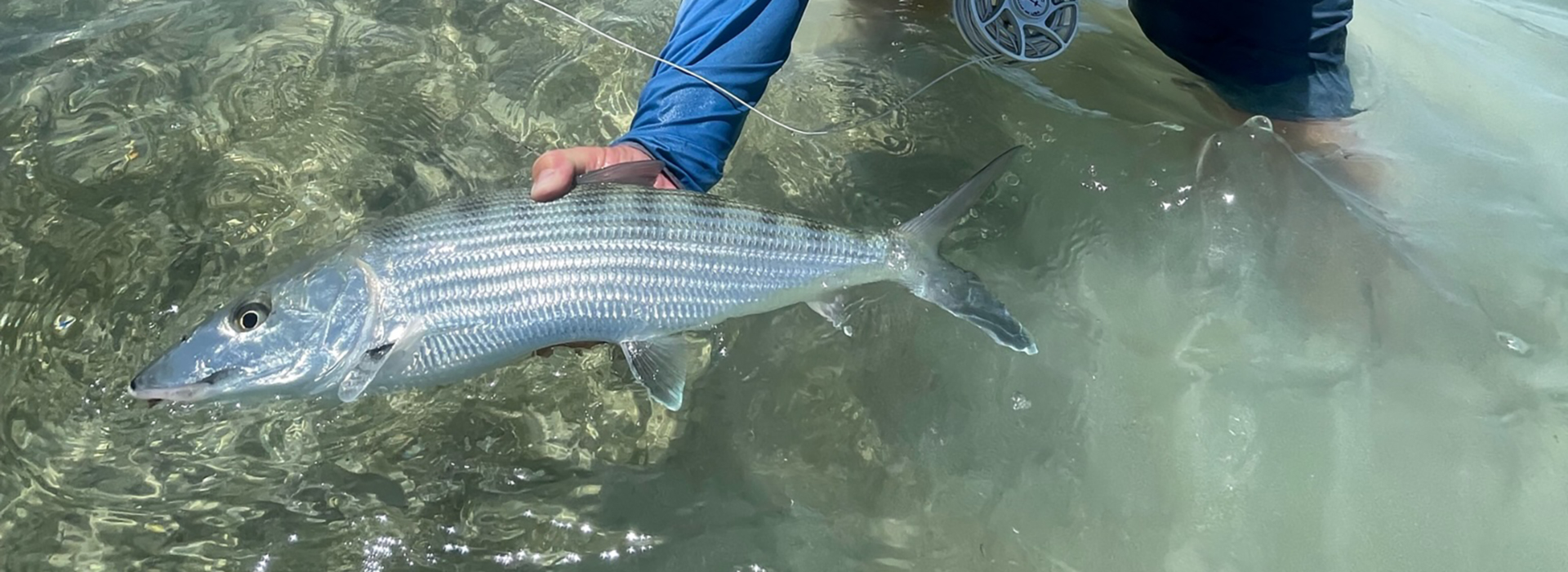So many visitors to the Keys have the desire to catch bonefish.
Key West Bonefishing
They are a unique species with characteristics like no other fish. Their sleek design lets bonefish swim in very shallow water and also gives them the ability to get away from predators with speed and agility.
The bonefish can be found throughout the Florida Keys and several parts of the Caribbean including the Bahamas, British Virgin Islands and Belize. Besides some locations in the Bahamas, the Florida Keys have some of the largest bonefish in the world.
One of the most published places in the Keys regarding bonefishing is Islamorada. The fish in what locals call the downtown waters are double-digit fish. These fish are smart and will only be fooled so many times before spooking off the flat in search of a new place to roam. There are many bonefishing tournaments in Islamorada throughout the year and some of them require weighing the fish alive and then releasing it. The population of larger fish in that area can be contributed to that.


Biscayne Bay also holds some very large bonefish. They can be found on the inside flats near Turkey Point and on the ocean flats near Ocean Reef. These fish see a lot of boat traffic and can sometimes be very difficult to feed.
The middle Keys near Marathon offer some great bonefishing around the 7-mile bridge area and other ocean-side flats at Bahia Honda State Park. The park beach is accessible by wading but getting there early is the key on an incoming tide to catch these fish before they get spooked by the regular beach crowds.
The Lower Keys have big bonefish too but just not as concintrated as the upper Keys. We have double-digit fish but the average weight is 6 to 8- pounds. Bonefish can be found from Big Pine Key all the way to the Marquesas.
We fish for bonefish with live shrimp and with small merkin-style crabs or classic bonefish patterns like the foxy clouser, gotcha and crazy charlie. The bonefish here in the Keys don’t seem to like the sparkle of some of the bonefish patterns used in the Bahamas, they mostly like patterns in tan, brown or orange.







